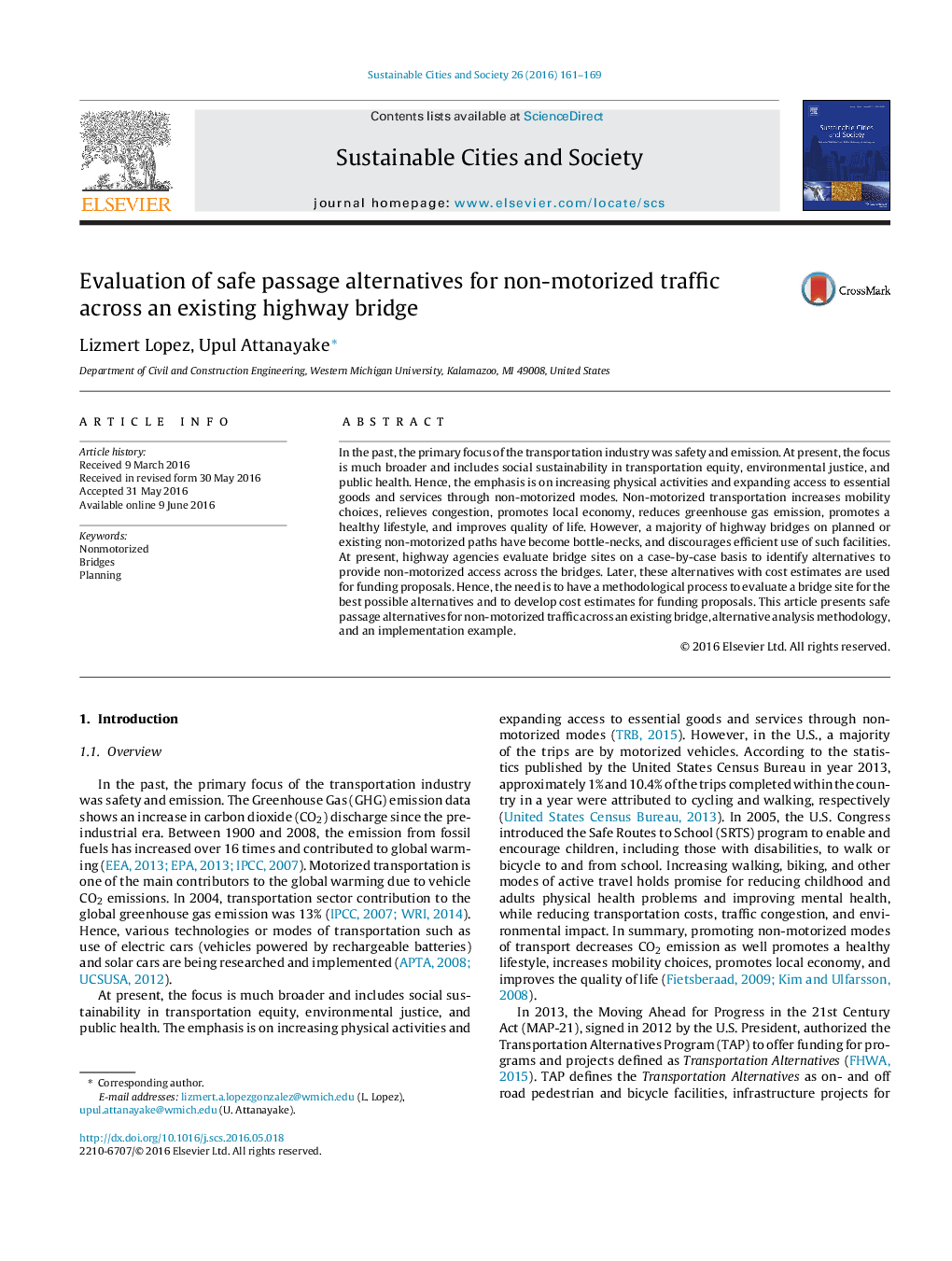| Article ID | Journal | Published Year | Pages | File Type |
|---|---|---|---|---|
| 308027 | Sustainable Cities and Society | 2016 | 9 Pages |
•There are five alternatives to provide non-motorized access across a bridge.•An alternative analysis methodology was developed and presented.•Selection of an alternative depends on the level of user’s comfort.
In the past, the primary focus of the transportation industry was safety and emission. At present, the focus is much broader and includes social sustainability in transportation equity, environmental justice, and public health. Hence, the emphasis is on increasing physical activities and expanding access to essential goods and services through non-motorized modes. Non-motorized transportation increases mobility choices, relieves congestion, promotes local economy, reduces greenhouse gas emission, promotes a healthy lifestyle, and improves quality of life. However, a majority of highway bridges on planned or existing non-motorized paths have become bottle-necks, and discourages efficient use of such facilities. At present, highway agencies evaluate bridge sites on a case-by-case basis to identify alternatives to provide non-motorized access across the bridges. Later, these alternatives with cost estimates are used for funding proposals. Hence, the need is to have a methodological process to evaluate a bridge site for the best possible alternatives and to develop cost estimates for funding proposals. This article presents safe passage alternatives for non-motorized traffic across an existing bridge, alternative analysis methodology, and an implementation example.
